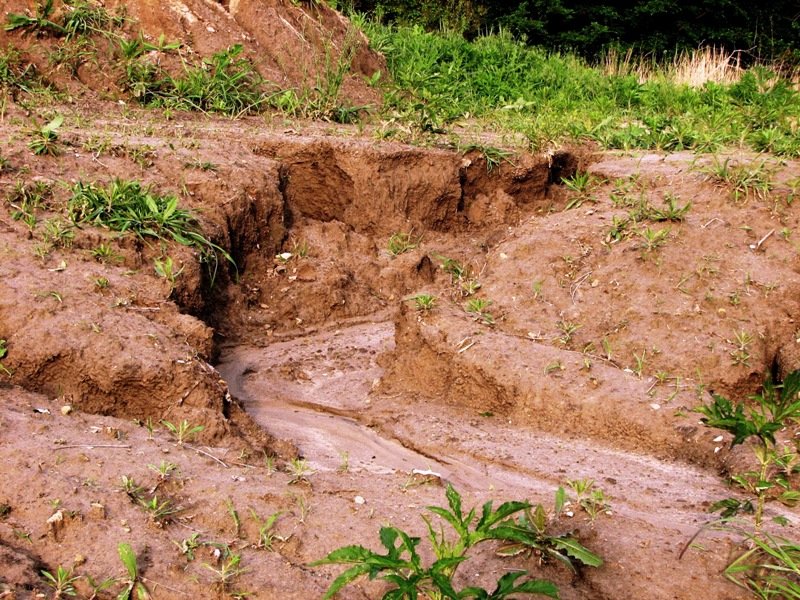‘Soil erosion in Iran 2.5 times the world average’

TEHRAN — Iran has a mean soil loss rate of 16 tons per hectare per year, while the worldwide average is about 6 tons per hectare per year, deputy agriculture minister has said.
“It means that soil erosion in Iran is about 2.5 times more than worldwide average,” Ali-Morad Akbari said in an interview with Mehr news agency published on Friday.
The effects of soil erosion go beyond the loss of fertile land. It has led to increased pollution and sedimentation in streams and rivers, clogging these waterways and causing declines in fish and other species. And degraded lands are also often less able to hold onto water, which can worsen flooding.
The simplest and most natural way to prevent erosion is through planting vegetation, building retaining walls around the area of erosion to prevent water runoff, and also encouraging contour ploughing to help reducing soil erosion, Akbari noted.
Soil is the earth’s fragile skin that anchors all life on Earth. It is comprised of countless species that create a dynamic and complex ecosystem and is among the most precious resources to humans.
The time needed to form a soil depends on the latitude; in environments characterized by a mild climate, it takes 200-400 years to form 1 cm of soil; in wet tropical areas soil formation is faster, as it takes 200 years, but in order to accumulate enough substances to make a soil fertile it takes 3000 years.
For these reasons the soil is considered as a non-renewable resource: once it has been destroyed, it is lost forever.
According to the World Wide Life (WWL) half of the topsoil on the planet has been lost in the last 150 years. In addition to erosion, soil quality is affected by other aspects of agriculture. These impacts include compaction, loss of soil structure, nutrient degradation, and soil salinity.
Iran covers an area of 165 million hectares and is located in an arid and semi-arid area, Akbari said, adding, some 50 million hectares of lands are fertile but due to the limited water resources only some 18.5 million hectares are based in agricultural uses.
The point is, Akbari highlighted, only 1.3 million hectares of the agricultural lands are classified as best and most versatile land by being most suitable for growing crops.
Another problem posing regarding the quality of the soil is shortages of minerals, the deputy said. “Salinity, soil contamination, over use of chemicals, industrial wastewater, etc., are constituting threats against soil sustainability in Iran.”
He further explained that the sixth five-year development plan (2016-2021) has tasked the government to take measures to improve 500 thousand hectares of agricultural soil annually.
He stated that soil improvement projects will cost some 3 trillion rials (nearly $75 million) but unfortunately the budget is yet to be allocated.
Healthy soils are the foundation of food production and ought to become a key agenda item in public policy, as soil degradation would severely hamper agricultural productivity and since soils are essential for achieving food security losing it would endanger social and economic security alike, he warned.
The International Union of Soil Sciences (IUSS), in 2002, adopted a resolution proposing the 5th of December as World Soil Day to celebrate the importance of soil as a critical component of the natural system and as a vital contributor to human wellbeing.
World Soil Day 2017 activities aim to communicate messages on the importance of soil quality for food security, healthy ecosystems and human well-being.
MQ/MG
Leave a Comment